Reconfigurable Laser-Stimulated Lock-In Thermography for Surface Micro-Crack Detection
Abstract
1. Introduction
2. Experiment Description
3. Results and Discussions
3.1. Sample A: Porous Metal Sample
3.2. Sample B: Customized Fatigue Cracks in Ti64 Alloy
4. Conclusions
Author Contributions
Funding
Data Availability Statement
Conflicts of Interest
References
- Ciampa, F.; Mahmoodi, P.; Pinto, F.; Meo, M. Recent advances in active infrared thermography for non-destructive testing of aerospace components. Sensors 2018, 18, 609. [Google Scholar] [CrossRef] [PubMed]
- Roshan, C.C.; Raghul, C.; Ram, H.V.; Suraj, K.; Solomon, J. Non-destructive testing by liquid penetrant testing and ultrasonic testing—A review. Int. J. Adv. Res. Ideas Innov. Technol. 2019, 5, 694–697. [Google Scholar]
- Kanematsu, W.; Sando, M.; Ives, L.K.; Marinenko, R.; Quinn, G.D. Dye impregnation method for revealing machining crack geometry. J. Am. Ceram. Soc. 2001, 84, 795–800. [Google Scholar] [CrossRef]
- Xie, R.; Chen, D.; Pan, M.; Tian, W.; Wu, X.; Zhou, W.; Tang, Y. Fatigue crack length sizing using a novel flexible eddy current sensor array. Sensors 2015, 15, 32138–32151. [Google Scholar] [CrossRef] [PubMed]
- Lutcenko, G.; Uchanin, V.; Mischenko, V.; Opanasenko, A. Eddy currents versus magnetic particles. In Proceedings of the 18th World Conference on Nondestructive Testing, Durban, South Africa, 16–20 April 2012; pp. 16–20. [Google Scholar]
- Shakibi, B.; Honarvar, F.; Moles, M.; Caldwell, J.; Sinclair, A.N. Resolution enhancement of ultrasonic defect signals for crack sizing. NDT E Int. 2012, 52, 37–50. [Google Scholar] [CrossRef]
- Wang, S.; Quan, C.; Tay, C.; Shang, H. Using laser scattering for detection of cracks on a microsolderball surface. J. Nondestruct. Eval. 2001, 20, 145–151. [Google Scholar] [CrossRef]
- Boué, C.; Holé, S. Comparison between multi-frequency and multi-speed laser lock-in thermography methods for the evaluation of crack depths in metal. Quant. InfraRed Thermogr. J. 2020, 17, 223–234. [Google Scholar] [CrossRef]
- Boué, C.; Holé, S. Open crack depth sizing by multi-speed continuous laser stimulated lock-in thermography. Meas. Sci. Technol. 2017, 28, 065901. [Google Scholar] [CrossRef]
- Omella, A.J.; Celorrio, R.; Pardo, D. Sensitivity and uncertainty analysis by discontinuous Galerkin of lock-in thermography for crack characterization. Comput. Methods Appl. Mech. Eng. 2021, 373, 113523. [Google Scholar] [CrossRef]
- Streza, M.; Fedala, Y.; Roger, J.P.; Tessier, G.; Boue, C. Heat transfer modeling for surface crack depth evaluation. Meas. Sci. Technol. 2013, 24, 045602. [Google Scholar] [CrossRef]
- Fedala, Y.; Streza, M.; Roger, J.; Tessier, G.; Boué, C. Open crack depth sizing by laser stimulated infrared lock-in thermography. J. Phys. D Appl. Phys. 2014, 47, 465501. [Google Scholar] [CrossRef]
- Fedala, Y.; Streza, M.; Sepulveda, F.; Roger, J.P.; Tessier, G.; Boué, C. Infrared Lock-in Thermography Crack Localization on Metallic Surfaces for Industrial Diagnosis. J. Nondestruct. Eval. 2014, 33, 335–341. [Google Scholar] [CrossRef]
- An, Y.-K.; Yang, J.; Hwang, S.; Sohn, H. Line laser lock-in thermography for instantaneous imaging of cracks in semiconductor chips. Opt. Lasers Eng. 2015, 73, 128–136. [Google Scholar] [CrossRef]
- Yang, J.; Hwang, S.; An, Y.-K.; Lee, K.; Sohn, H. Multi-spot laser lock-in thermography for real-time imaging of cracks in semiconductor chips during a manufacturing process. J. Mater. Process. Technol. 2016, 229, 94–101. [Google Scholar] [CrossRef]
- Ding, L.; Jinghua, T. Reconfigurable Laser Stimulated Lock-In Thermography for Micro-Crack Detection. Google Patents WO/2018/182530, 4 October 2018. [Google Scholar]
- Efron, U. Spatial Light Modulator Technology: Materials, Devices, and Applications; CRC Press: Boca Raton, FL, USA, 1994; Volume 47. [Google Scholar]
- Zhang, B.; Xiu, M.; Tan, Y.T.; Wei, J.; Wang, P. Pitting corrosion of SLM Inconel 718 sample under surface and heat treatments. Appl. Surf. Sci. 2019, 490, 556–567. [Google Scholar] [CrossRef]
- Celorrio, R.; Omella, A.; Pech-May, N.; Oleaga, A.; Mendioroz, A.; Salazar, A. Vertical cracks characterization using lock-in thermography: II finite cracks. Meas. Sci. Technol. 2014, 25, 115602. [Google Scholar] [CrossRef]
- Vincent, O.R.; Folorunso, O. A descriptive algorithm for sobel image edge detection. In Proceedings of the Informing Science & IT Education Conference (InSITE), Macon, GA, USA, 12–15 June 2009; pp. 97–107. [Google Scholar]
- Pech-May, N.; Oleaga, A.; Mendioroz, A.; Omella, A.; Celorrio, R.; Salazar, A. Vertical cracks characterization using lock-in thermography: I infinite cracks. Meas. Sci. Technol. 2014, 25, 115601. [Google Scholar] [CrossRef]
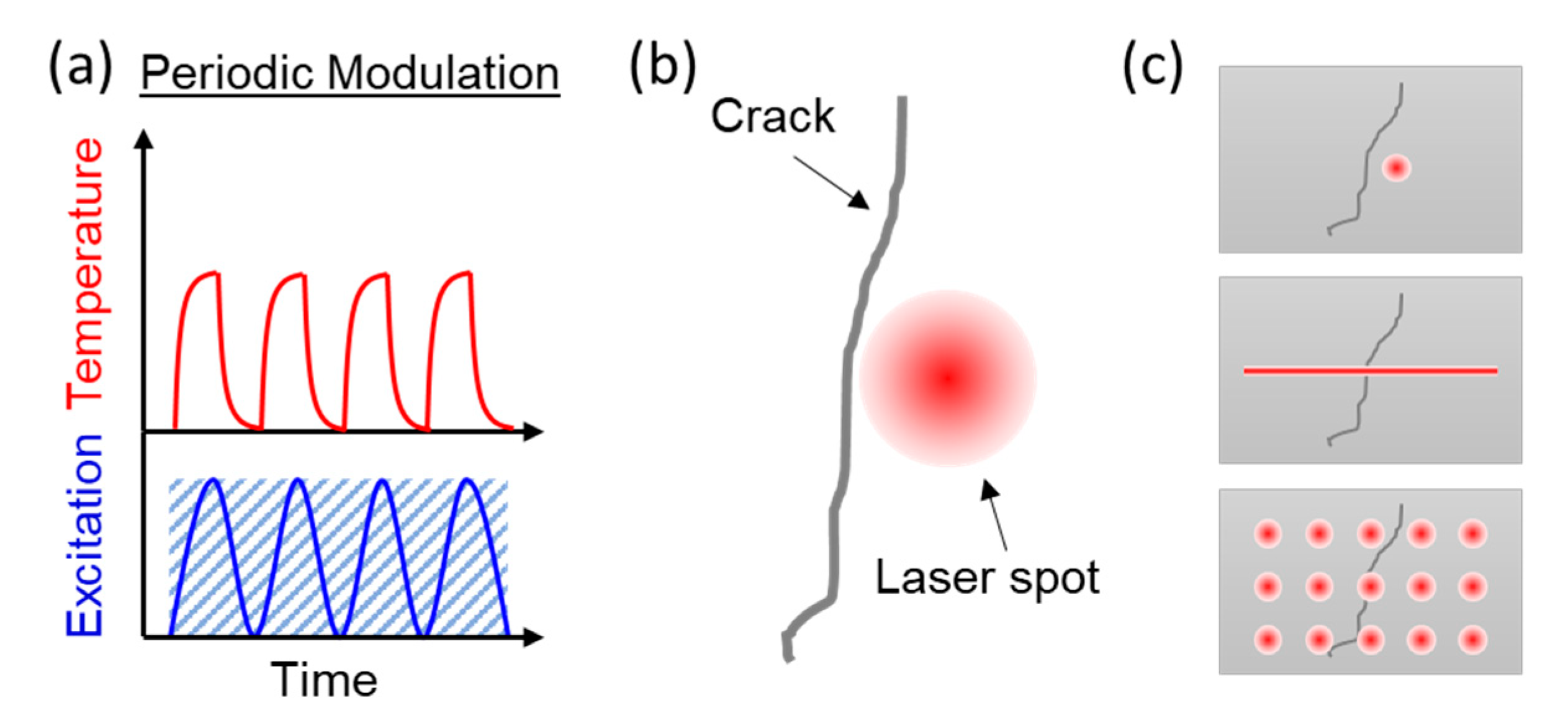
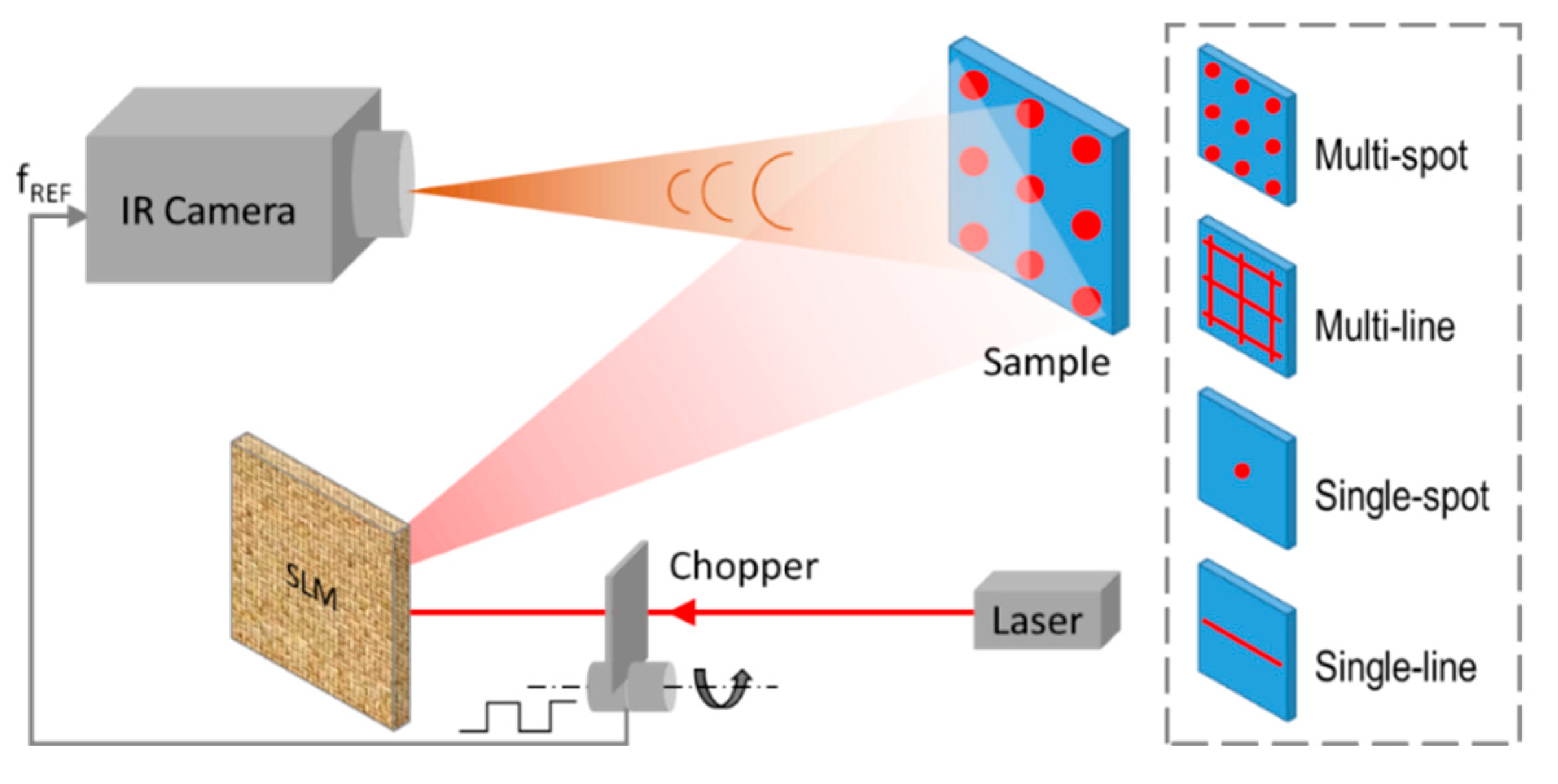
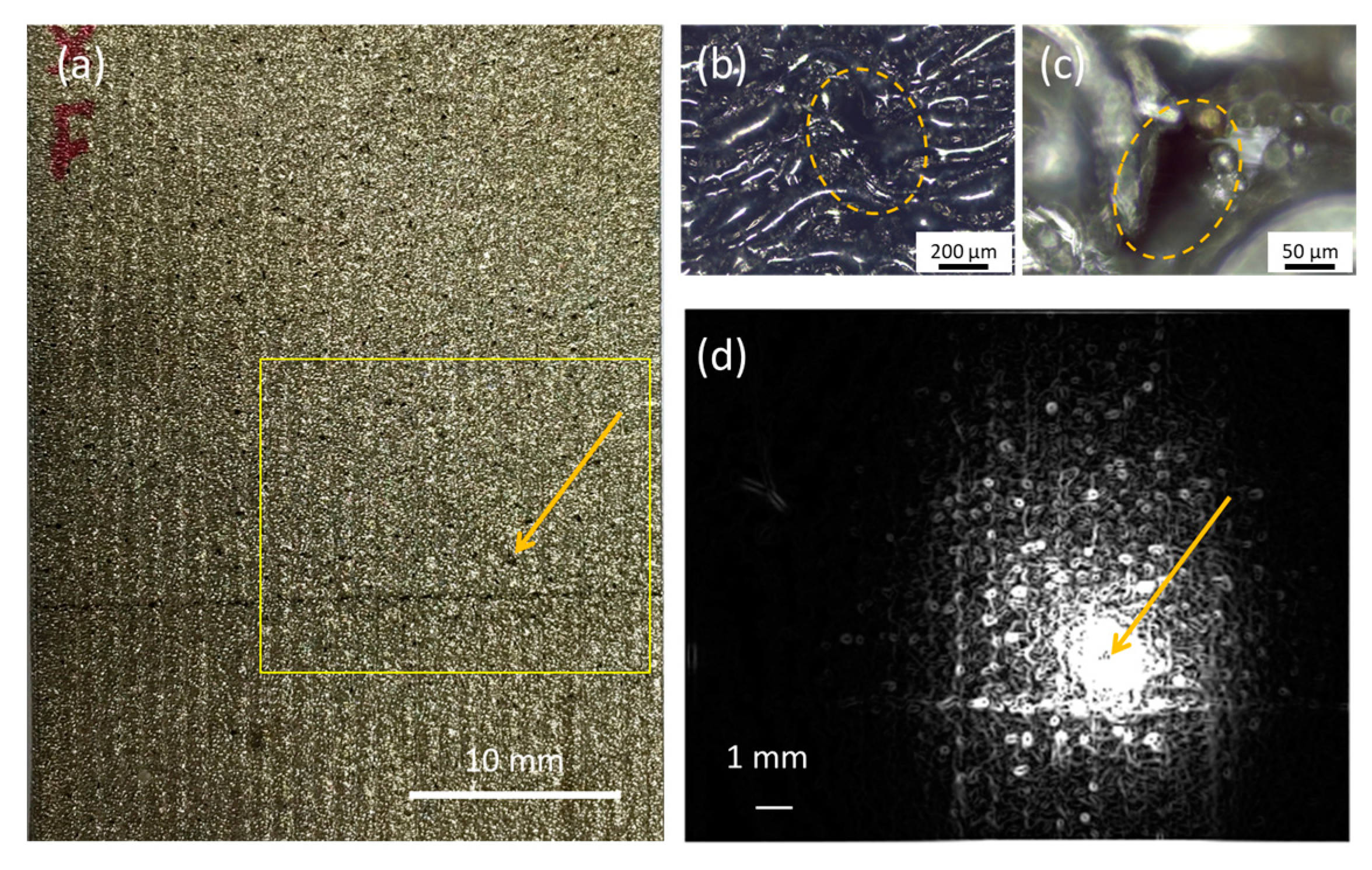
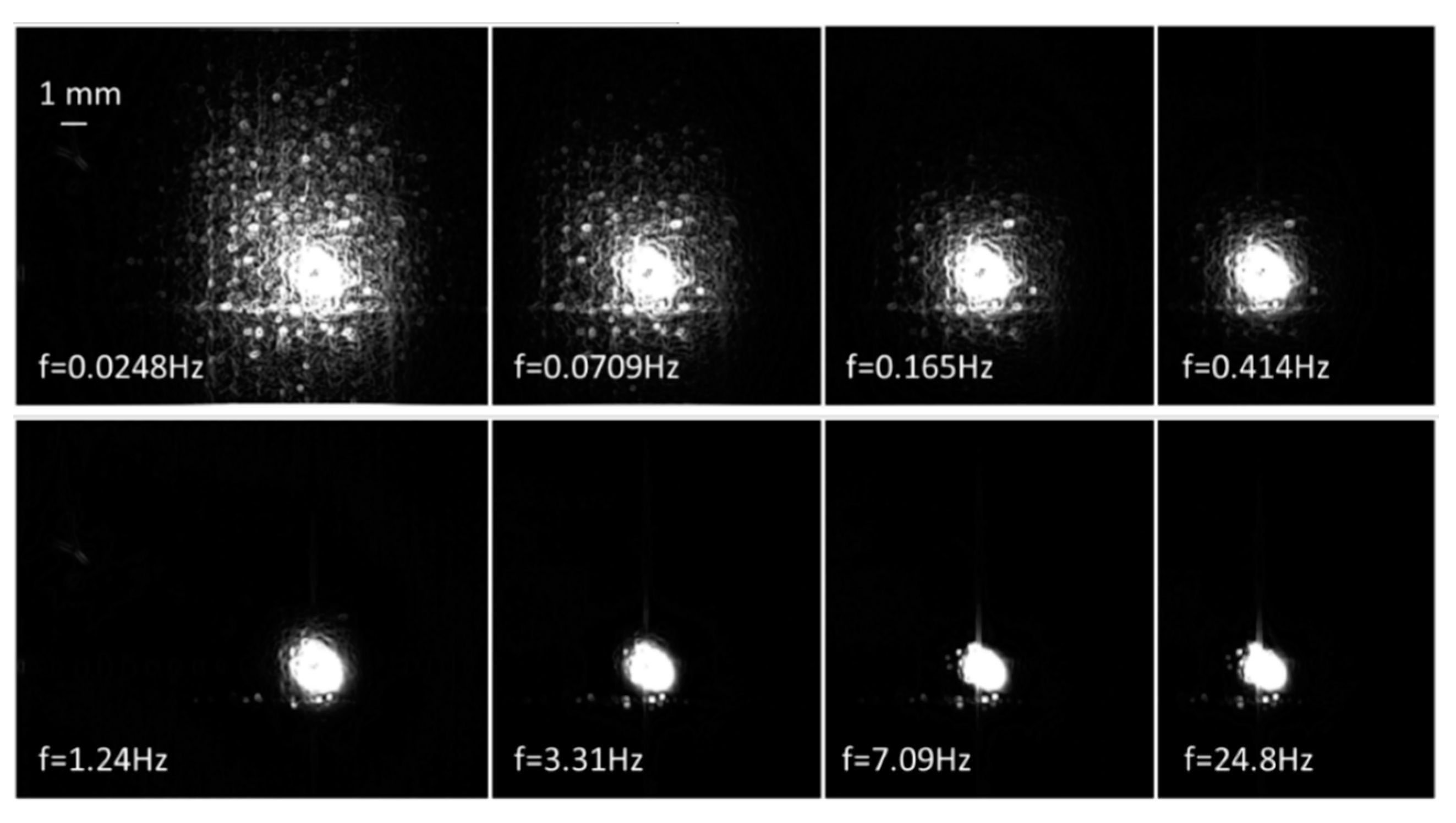
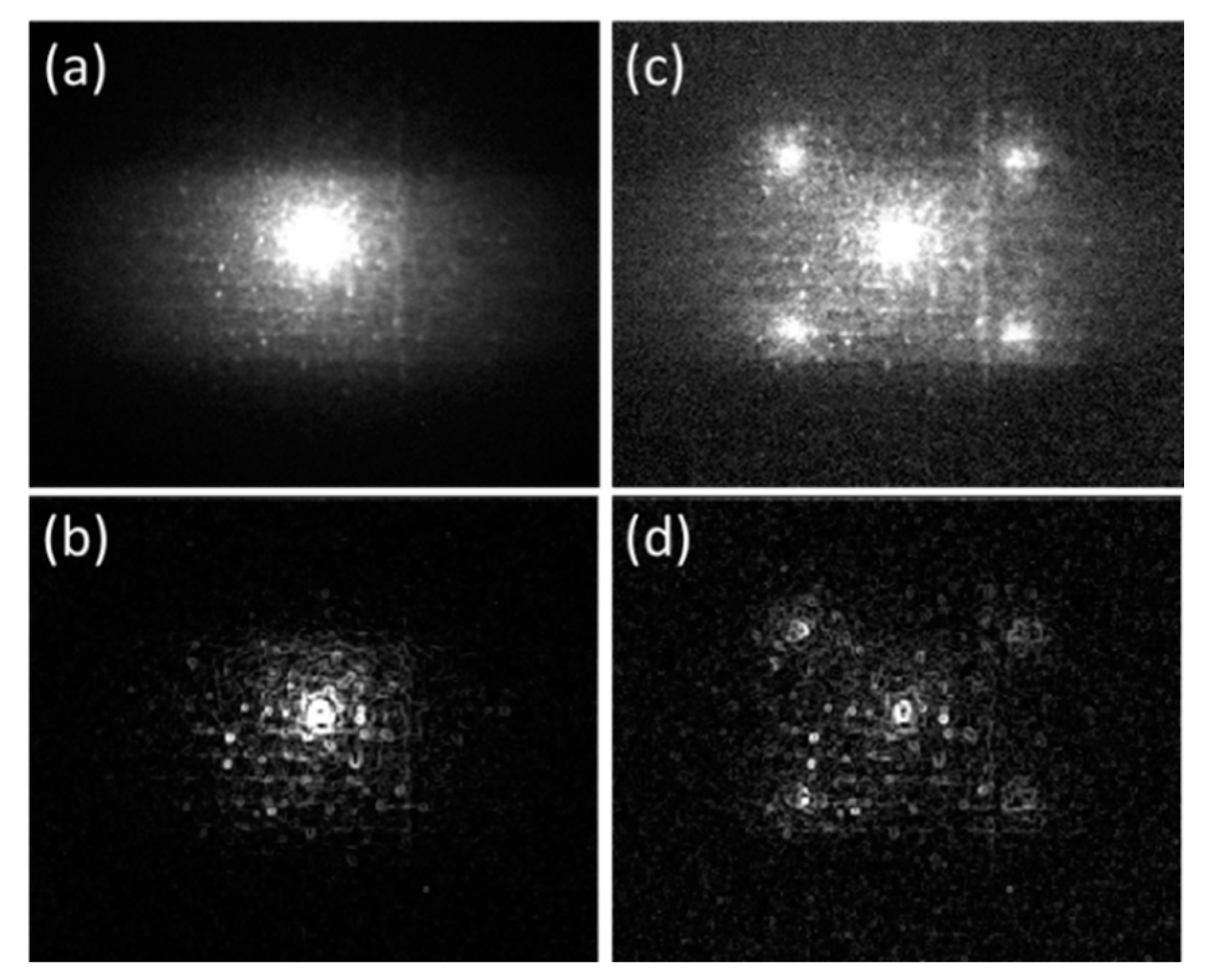
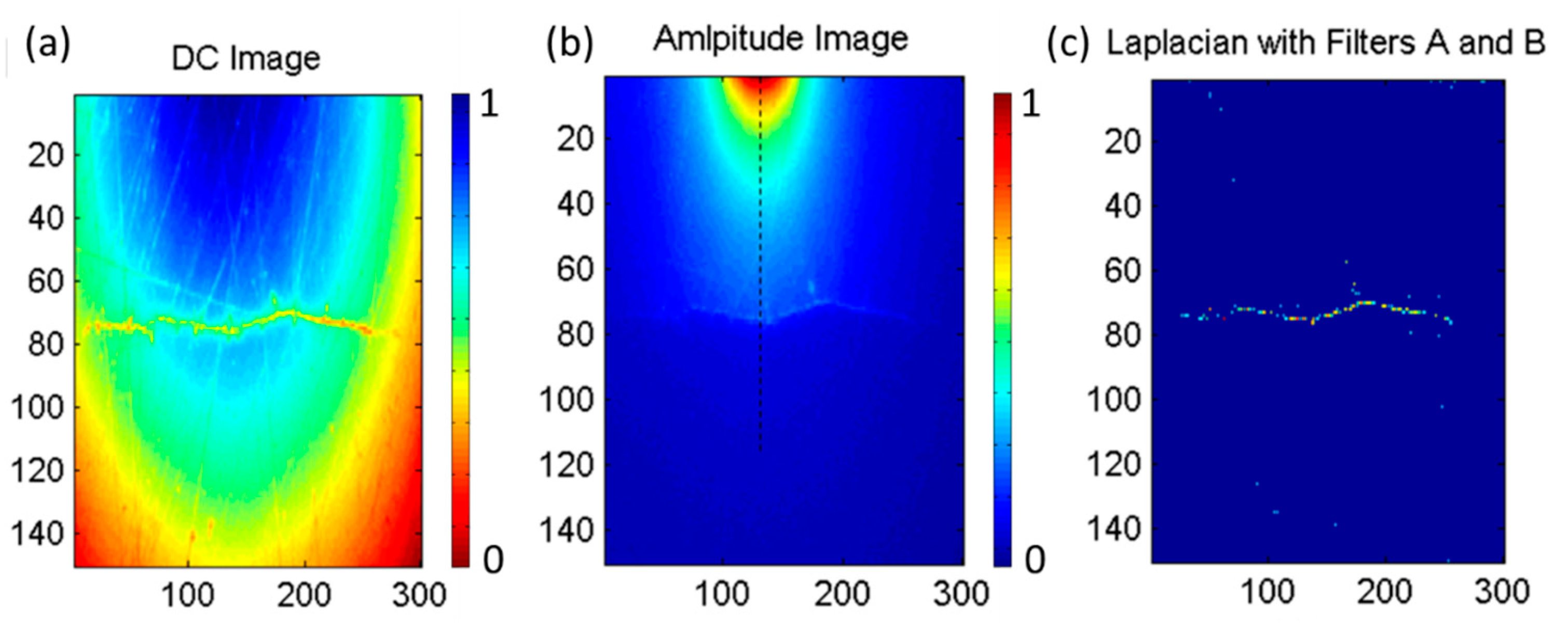

| No. | Crack ID | X/mm | Y/mm | Length/mm | Opening/μm |
|---|---|---|---|---|---|
| 1 | W1123 | 10 | 10 | 0.8 | 1.2 |
| 2 | W1118 | 8 | 10 | 1.1 | 0.9 |
| 3 | W1142 | 10 | 12 | 1.2 | 1.7 |
| 4 | W1134 | 10 | 10 | 1.8 | 3.6 |
| 5 | W1144 | 9 | 9 | 2.5 | 7 |
| 6 | W1153 | 9 | 12 | 3.1 | 7 |
| 7 | W1122 | 10 | 10 | 3.4 | 10 |
| Physical Parameters | Ti64 Alloy | Unit |
|---|---|---|
| Thermal conductivity k | 6.7 | Wm−1 K−1 |
| Specific heat capacity cp | 526.3 | JKg −1 K−1 |
| Density ρ | 4430 | Kgm−3 |
| Thermal diffusivity α = k/ρcp | 2.87 × 10−6 @ 27 °C | m2 s−1 |
Disclaimer/Publisher’s Note: The statements, opinions and data contained in all publications are solely those of the individual author(s) and contributor(s) and not of MDPI and/or the editor(s). MDPI and/or the editor(s) disclaim responsibility for any injury to people or property resulting from any ideas, methods, instructions or products referred to in the content. |
© 2023 by the authors. Licensee MDPI, Basel, Switzerland. This article is an open access article distributed under the terms and conditions of the Creative Commons Attribution (CC BY) license (https://creativecommons.org/licenses/by/4.0/).
Share and Cite
Ding, L.; Gorelik, S.; Wang, P.; Sadovoy, A.V.; Zhu, Q.; Ngo, A.C.Y.; Teng, J. Reconfigurable Laser-Stimulated Lock-In Thermography for Surface Micro-Crack Detection. Sensors 2023, 23, 4090. https://doi.org/10.3390/s23084090
Ding L, Gorelik S, Wang P, Sadovoy AV, Zhu Q, Ngo ACY, Teng J. Reconfigurable Laser-Stimulated Lock-In Thermography for Surface Micro-Crack Detection. Sensors. 2023; 23(8):4090. https://doi.org/10.3390/s23084090
Chicago/Turabian StyleDing, Lu, Sergey Gorelik, Pei Wang, Anton Valentinovich Sadovoy, Qiang Zhu, Andrew Chun Yong Ngo, and Jinghua Teng. 2023. "Reconfigurable Laser-Stimulated Lock-In Thermography for Surface Micro-Crack Detection" Sensors 23, no. 8: 4090. https://doi.org/10.3390/s23084090
APA StyleDing, L., Gorelik, S., Wang, P., Sadovoy, A. V., Zhu, Q., Ngo, A. C. Y., & Teng, J. (2023). Reconfigurable Laser-Stimulated Lock-In Thermography for Surface Micro-Crack Detection. Sensors, 23(8), 4090. https://doi.org/10.3390/s23084090







